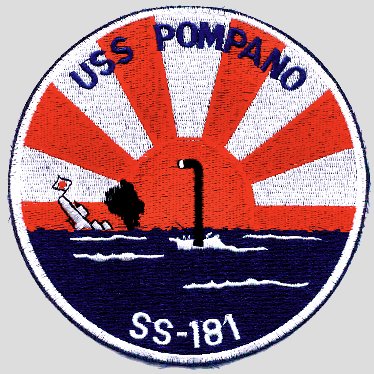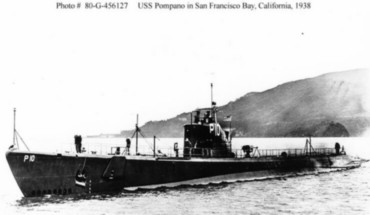

Posted on 09/18/2006 7:41:46 PM PDT by neverdem
On Dec. 4, 1983, 28 aircraft from the USS Independence Carrier Battle Group attacked Hezbollah and Syrian anti-aircraft positions in Lebanon's Bekaa Valley. Two U.S. Navy A-7s were lost on the mission and a third aircraft was damaged. One of the downed pilots died of wounds in captivity and the other, Lt. Robert Goodman, was taken prisoner and paraded before the cameras. Though Lt. Goodman was eventually released, the U.S. Navy had learned a hard lesson.
Ten days later, U.S. reconnaissance flights were fired on again -- but this time the response was different. Instead of launching air strikes, the battleship USS New Jersey opened fire -- and with just 11 2,700-pound, 16-inch rounds, silenced the anti-aircraft sites. This feat was repeated on Feb. 8, 1984, when Syrian artillery opened fire on Christian West Beirut -- inflicting heavy civilian casualties. Less than two hours of fire from the New Jersey's 16-inch guns eliminated the Syrian artillery threat. It wouldn't be the last time the World War II-era "battlewagons" would serve our national interests.
During the 1981-1988 Iran-Iraq War, the Ayatollahs running Tehran decided the best way to influence the outcome of the conflict was to attack Western oil tankers transiting the Persian Gulf -- through which passes 20 percent of the world's oil. The United States responded by beefing up the 5th Fleet -- and deploying the USS Iowa. The battleship's captain, Larry Sequist, described the effectiveness of the 45,000-ton armored behemoth: "When we would sail the Iowa down the Strait of Hormuz, all southern Iran would go quiet. Iran's Revolutionary Guards were steaming around in boats with rockets, shooting at ships. When we arrived, all of that stuff stopped."
When Saddam invaded Kuwait in August 1990, the battleship Wisconsin was among the first capital ships to arrive in the Persian Gulf. By the time Operation Desert Storm concluded on Feb. 28, 1991, the Wisconsin and her sister battleship, USS Missouri, had delivered more than 1 million pounds of ordnance on the enemy from their 16-inch guns, Tomahawk TLAM-C cruise missiles and 5-inch gun batteries. Fire from the battleships was so overwhelming that an Iraqi garrison actually surrendered to one of the USS Wisconsin's unmanned aerial vehicles.
Despite the effectiveness of the vessels in modern warfare -- and pleas from the U.S. Marine Corps to retain them for Naval Surface Gunfire Support -- two of the four battleships, the New Jersey and the Missouri, were decommissioned and turned into floating museums. Until now, however, Congress has insisted that the Wisconsin and Iowa be maintained in "a state of readiness" for "rapid reactivation" in the "event of a national emergency."
But all that may be about to change. A House-Senate Conference Committee is now considering lifting the requirement that the last two "heavy gun" ships in the allied arsenal be kept ready for action. Apparently the lessons of recent history have been lost on the administration -- and perhaps even in the corridors of Congress -- despite new threats from Iran to acquire nuclear weapons and interfere with shipping in the Persian Gulf.
Just three weeks ago, Iranian Revolutionary Guard naval craft attacked a Romanian oil rig, assaulted the offshore platform and briefly took the crew hostage before evicting them. And last week, as President Bush was preparing to remind the world of the threat posed by Tehran, Iranian President Mahmoud Ahmadinejad told a cheering crowd of supporters that "Iran has the ability to control the flow of oil the world needs."
Given the Jihad being waged against the West in much of the Islamic littoral, Iranian "saber rattling" and the lack of any replacement for the well-protected firepower of the Wisconsin and Iowa, turning them into floating museums now seems foolhardy. Yet, according to the green-eyeshade procurement wizards at the Pentagon, the two remaining battleships are too old, too expensive to operate and too costly in crew size to be deployed.
Instead of keeping the heavily-armored battlewagons maintained and ready, the brass at the five-sided puzzle palace and big spenders on Capitol Hill want the Marines to bide their time until 2012, when the Navy says it will deploy seven new DDG-1000 class destroyers -- at $3.3 billion apiece. These slower, thin-skinned vessels are to be equipped with an unproven Advanced Gun System designed to fire rounds weighing only 63 pounds but costing nearly $100,000 each. Even if the new ships eventually perform as advertised by their promoters, that's scant solace to the soldier or Marine who needs naval gunfire support at any point during the next six years.
People in Washington who ought to know better -- like Sen. John Warner, R-Va., the chairman of the Senate Armed Services Committee -- have turned a deaf ear to the plight of the Marines. Thankfully, a handful of stalwarts led by Rep. Roscoe Bartlett, R-Md., have taken up the cause of preserving the Wisconsin and Iowa as mobilization assets. He believes that keeping the battlewagons ready to fight will save American lives. He's right.
Well, one reason would be that todays military is plagued with street gang thugs and the inability to properly 'break down' these individuals. Stern words won't work against these kids.
All of the above and more!
Along with the new guided ballistic shells, oh yea. Anything and everything. Just a massive beast. And if torpedos are a problem, then solve it. Swarms of robotic defenders woudl be cool.
if we don't currently have the workers to produce such a ship, then make them. The workers who did it in the past weren't born with the knowledge. Anyone with that type of thinking should be careful... they've sipped one to many lattes.
Grow a set, say 'we will make this happen'.. then start working on getting it done.
ok, that sucks and is depressing.
It didn't break her spine.
Improvements where made to the Iowa class ships.
The 650 pound (comp. B?) warhead of a Mark 48 torpedo could break the spine of an Iowa class BB if it detonated immediately below the keel but I don't think "would is the right term.
I hear you on that. I enlisted and went to basic training at 29 and proceeded to smoke all the females except for 2 in PT, how pathetic. We had 18 year old females that couldn't do a damn proper push up or sit up.
Bethlehem Steel supplied the guns and major steel. Sad that we have lost so much of that capability.
"These slower, thin-skinned vessels are to be equipped with an unproven Advanced Gun System designed to fire rounds weighing only 63 pounds but costing nearly $100,000 each. "
Don't know about the price, but the DDG-1000's AGS throws the LRLAP, a 250 lb munition with a 25 lb charge that is guided up to 90 nm to a precise kill 1 sq meter. Cyclic rate of 6 rnd per minute...That beats the reach and precision of a 16 inch at only 26 miles.
But I do love the Iowa!


Very nice posts devolve.
The Pompano Letters I saw are beautiful.
That's a patch that laughs at "PC"
"Still on patrol"
Not sure I understand the 'still on patrol' business.
Last signal was in 1942
The US Navy keeps them as "active"
ROYAL OAK and BARHAM were WW I era BBs. For comparison, try the BISMARCK. When James Cameron did his special on it a couple of years back, he was able to get a miniature sub/camera into the outer hull. None of the DORSETSHIRE's torpedoes [and she fired at least four at a then stationary target], penetrated the armor belt and outer hull.
That is a nice thought!
Not unless it was nuclear it wouldn't The British X craft put something like 2,000 pound of high explosive under the TRIPITZ in a fairly shallow Fjord. Damaged her. But it didn't break her back. And it didn't sink her.
Wansn't a battleship. Was either a cruiser, or frigate. And it had an aluminum hull that was very thin. Also had too much magnesium in the metal.
Here is a link to the type of armor the Iowa class has.
http://www.battleship.org/html/Articles/IowaClass/Armor.htm
From what I read there it was designed to be hit by 700lbs bombs.
Iran's antiship missles the C-802 and HY-2 has payloads of 165lbs and 513lbs respectively and a range of about 100 miles.
Chinese Silkworm missiles has a 454lbs warhead and the Exocet that hit the USS Stark was 165lbs. The US Harpoon carries a 488lbs warhead and a Tomahawk cruise missile can carry 1000lbs warhead.
Disclaimer: Opinions posted on Free Republic are those of the individual posters and do not necessarily represent the opinion of Free Republic or its management. All materials posted herein are protected by copyright law and the exemption for fair use of copyrighted works.